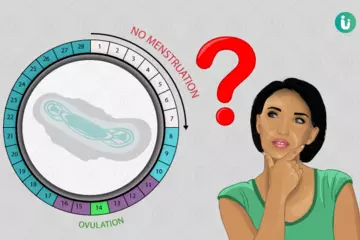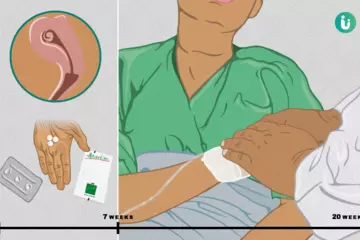What is bladder infection?
Bladder infection (cystitis) is the most common form of urinary tract infection affecting children and adults alike. Other sites of infection in the urinary tract include kidneys (pyelonephritis) and urethra (urethritis). Women are more prone to bladder infection than men. Burning with urination and frequent urination are the most common symptoms of bladder infection. When left untreated, the infection in the bladder spreads to the kidneys and/or the urethra. Doctors prescribe antibiotics to get rid of the infection and relieve the discomforting symptoms. (Consult a doctor with Doctor app)
What are its main signs and symptoms?
The symptoms associated with bladder infection often cause significant distress. These include:
- Pain and/or burning sensation while passing urine. (Read more: Painful urination causes)
- Frequent urge to pass urine, with a desire to urinate just after urinating, which is felt throughout the day and night
- Inability to hold urine
- Change in the urine colour – cloudy, dark coloured, etc.
- Blood in urine in case of severe infection
- Strong urine odour
- Pain in the lower abdomen with general weakness
- Fever with chills, in case of high-grade infection
What are its main causes?
Most cases of urinary tract infections or bladder infections are caused by a type of bacteria called
E. coli.
Factors that increase the risk of acquiring the infection include
- Catheter placed in the bladder for a long time
- Sexual intercourse, menopause, barrier methods of contraception (diaphragm), pregnancy etc. commonly result in bladder infection in women. Women are more prone to bladder infections due to the short length of the urethra and the location of the urethral opening close to the anus
- Diabetes
- Enlarged prostate gland
- Old age and chronic illness with prolonged immobility
- Surgery or other procedures related to the urinary tract
How is it diagnosed and treated?
Doctors diagnose bladder infection on the basis of symptoms and physical examination. Tests that help in confirming the diagnosis include:
Urine analysis
- Dip-stick test is used to detect the increased acidity of the urine during infection. It is the most cost-effective test for detection of infection in the urine.
- Nitrites and leucocyte esterase tests detect the presence of white blood cells in the urine during infection.
- Urine culture is done to evaluate the growth of infection-causing bacteria in the urine sample in an artificial medium in the lab.
Imaging studies
Various other investigations are done in cases of high-grade and recurring infections, or infections that do not respond to the standard treatment. These investigations include:
- Cystoscopy
- Ultrasound
- X-ray imaging
- Intravenous pyelogram (IVP)
- Computed tomography scan (CT scan)
- Magnetic resonance imaging (MRI)
- Urodynamic studies
Treatment of bladder infection is aimed at eradication of the infection and relief from the distressing symptoms.
Antibiotics
- Bladder infection generally resolves after an antibiotic course of 5 days in adults and 2 to 3 days in children.
- Recurrence of infection is delayed with a longer course of antibiotics.
- In severe infections, intravenous antibiotics are given.
Other medicines
- Urine alkalisers are medicines that decrease the acidity of urine and decrease the burning sensation.
Self-care
- Drink plenty of fluids to wash away the infection through frequent urination.
- Avoid taking NSAIDs (non-steroidal anti-inflammatory drugs) like ibuprofen or aspirin during a urinary tract infection, as it may cause complications.
- Cranberry juice helps in preventing the recurrence of bladder infections.
- Hot water compresses help in relieving abdominal pain.

 Doctors for Bladder Infection
Doctors for Bladder Infection  OTC Medicines for Bladder Infection
OTC Medicines for Bladder Infection



















